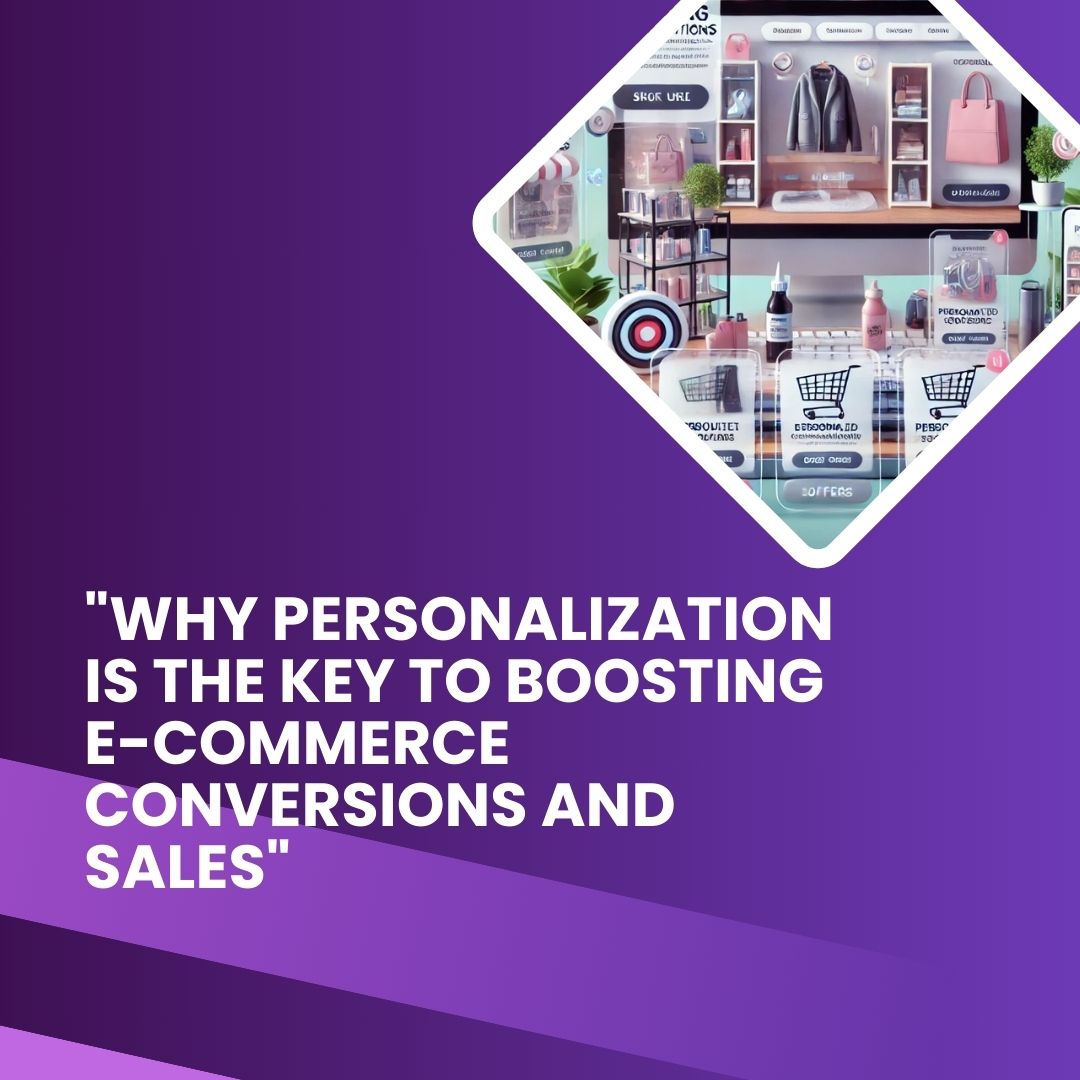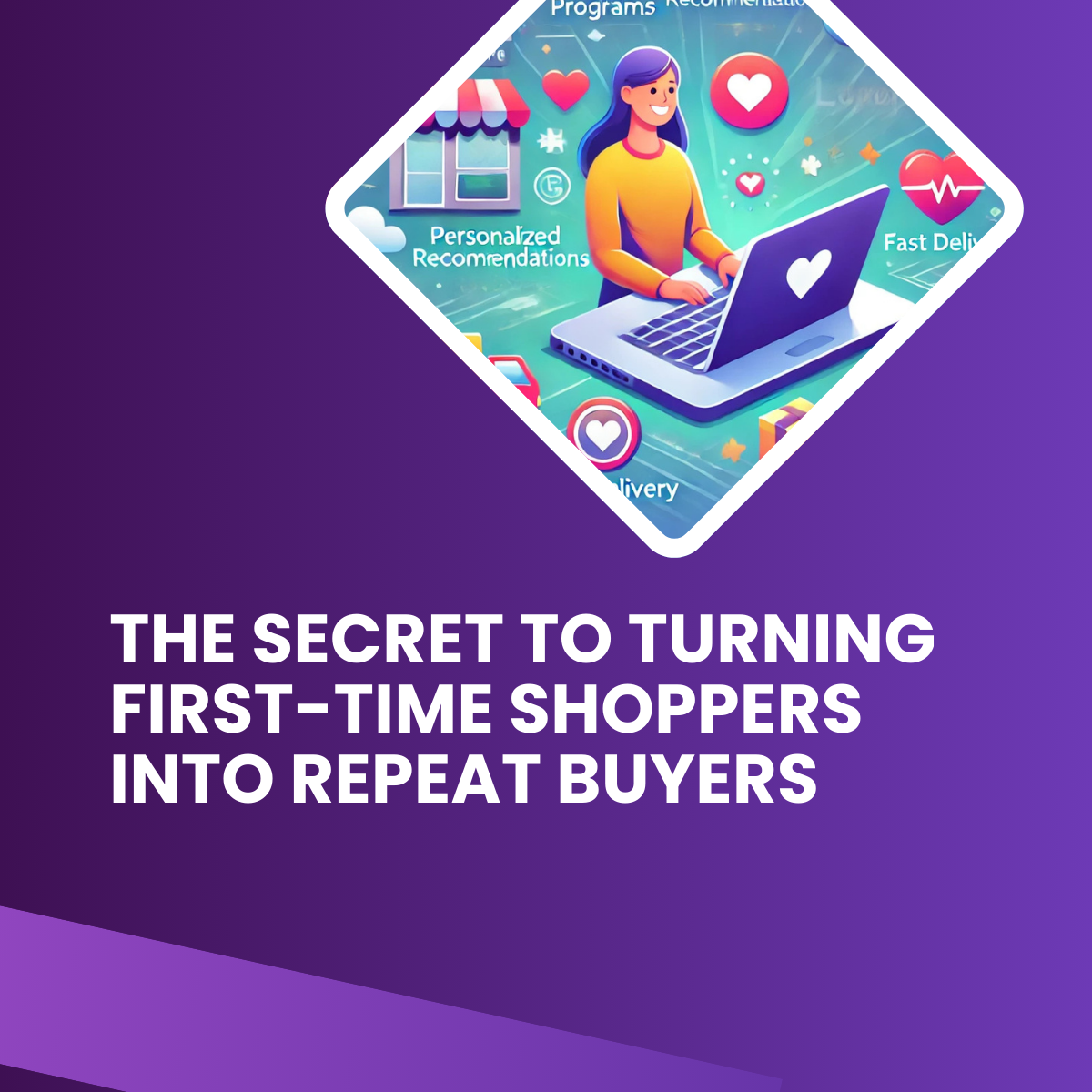The Role of Personalization in E-commerce: How Tailored Experiences Drive Higher Conversions
Personalization is no longer just a competitive advantage in e-commerce—it’s an expectation. Customers today seek relevance in every interaction, from product recommendations to tailored promotions. Businesses that align their strategies with customer preferences and behaviour consistently outperform those offering generic shopping experiences. Whether it’s surfacing products based on browsing history or sending targeted offers to reduce cart abandonment, personalization has proven to be one of the most effective tools for converting visitors into loyal customers.
Why Personalization Matters in E-commerce
Personalization is far more than simply addressing a customer by name or recommending products they’ve already purchased. It's about understanding the complete user journey and delivering relevant, customized experiences at every touchpoint. Here’s why personalization is crucial for e-commerce businesses:
- Increased Frustration from Lack of Personalization: 74% of consumers feel frustrated when website content is not personalized (Epsilon), and this frustration often leads to abandoned carts and lost sales.
- Higher ROI on Marketing Spend: Personalized experiences deliver 5 to 8 times higher ROI on marketing spend (McKinsey).
- Boosting Average Order Value (AOV): Personalized recommendations can increase the average order value by up to 10% (Salesforce).
For e-commerce brands, personalization isn’t just about enhancing the customer experience—it’s about improving key metrics that directly affect the bottom line. From better engagement to higher conversion rates, personalization is a proven way to boost sales and customer loyalty.
Key Personalization Strategies for E-commerce
To implement effective personalization, e-commerce businesses can adopt several key strategies. Let’s break them down:
-
Product Recommendations
Personalized product recommendations are one of the most powerful tools in e-commerce. When customers see products that align with their preferences—whether based on past purchases or browsing behaviour—they are more likely to make a purchase.
For instance, Amazon generates 35% of its revenue through its recommendation engine (McKinsey). This system doesn’t just increase sales—it enhances the shopping experience by offering relevant choices at the right time, resulting in a better overall user journey.
-
Dynamic Content
Dynamic content allows a website to adjust in real-time based on user behaviour. Whether it’s displaying different banners, pop-ups, or offers based on past interactions, dynamic content ensures that each visitor feels like the site is personalized just for them.
This could include showcasing a special discount on a product the user has been eyeing, or displaying an offer based on their location or browsing history. The goal is to deliver relevant content that drives conversions by meeting the user where they are in their journey.
-
Personalized Email Marketing
Email marketing remains one of the most effective ways to deliver personalized experiences. By leveraging behavioural triggers—such as abandoned carts or recently viewed products—businesses can send highly relevant, tailored emails to re-engage users.
Take Target, for example. They use purchase history to send personalized offers and product suggestions via email, which drives conversions and repeat purchases. Personalized email content boosts conversion rates by 29% (Experian), demonstrating how impactful this strategy can be for driving sales.
Behaviour Code: Enabling True Personalization
While the strategies mentioned are key, implementing them effectively requires comprehensive user insights. This is where Behaviour Code plays a crucial role. By providing detailed data on how users interact with your website, Behaviour Code enables e-commerce businesses to understand the complete customer journey and optimize their personalization efforts.
-
User Journey Insights
Behaviour Code captures in-depth data on each user’s journey across your site. This includes identifying crucial touchpoints where personalization can have the greatest impact. For example, it helps pinpoint moments when a visitor is likely to abandon their cart or when they’re most engaged with a product. With this valuable information, businesses can trigger personalized offers or content at exactly the right moment, increasing the chances of conversion.
-
Segmentation
One-size-fits-all approaches don’t work in today’s e-commerce environment. Behaviour Code allows businesses to segment users based on a variety of factors, such as browsing behaviour, past purchases, and demographic data. This segmentation ensures that each user is presented with highly targeted campaigns and personalized recommendations—driving higher engagement and conversion rates.
-
Behavioural Triggers
Understanding when a user is ready to convert is key to delivering effective personalization. Behaviour Code tracks user behaviour in real-time and triggers personalized content, such as product suggestions or special promotions, at critical moments—such as when a user spends a certain amount of time on a product page or abandons their cart. These triggers ensure that users are continually engaged and motivated to complete their purchases.
Best Practices for Implementing Personalization
To get started with personalization on your e-commerce site, consider these best practices:
- Start Small, Then Scale: Begin by personalizing key touchpoints, such as the homepage or product recommendations. As you gather more insights about user behaviour, you can scale your efforts across more pages, categories, and other touchpoints.
- Test and Refine: A/B testing is essential for fine-tuning your personalization strategies. By leveraging data from Behaviour Code, you can determine what’s working and continuously refine your tactics for greater impact. This iterative process will help you deliver more relevant, effective personalized experiences over time.
- Continuously Optimize: Personalization is not a one-time project—it’s an ongoing process. As you gather more insights from Behaviour Code, you can continually optimize your website’s content, product recommendations, and other elements to improve user engagement and conversions.
Overcoming Challenges in Personalization
Personalization can be complex, especially when dealing with vast amounts of data. Here are a couple of challenges you might face—and how to overcome them:
- Data Privacy Concerns: With increasing concerns around data privacy and regulations like GDPR, it’s essential to handle customer data responsibly. Behaviour Code is designed with privacy in mind. This ensures compliance with data privacy laws, so you can focus on personalization without compromising user trust.
- Data Overload: Too much data can overwhelm decision-makers and lead to analysis paralysis. Behaviour Code simplifies this process by delivering clear, actionable insights that allow businesses to focus on what matters most—turning data into personalized experiences that drive conversions.
Conclusion
Personalization is no longer just a nice-to-have feature; it’s a must-have strategy for driving conversions in e-commerce. By leveraging data and insights to create tailored shopping experiences, businesses can not only increase sales but also foster stronger connections with their customers. With Behaviour Code, you can track, analyze, and act on user behaviour, turning every interaction into a personalized opportunity for conversion.
Call to Action
Ready to unlock the full potential of personalization? Start using Behaviour Code today to gain actionable insights into user behaviour and deliver a shopping experience that not only drives conversions but also builds lasting customer loyalty.


